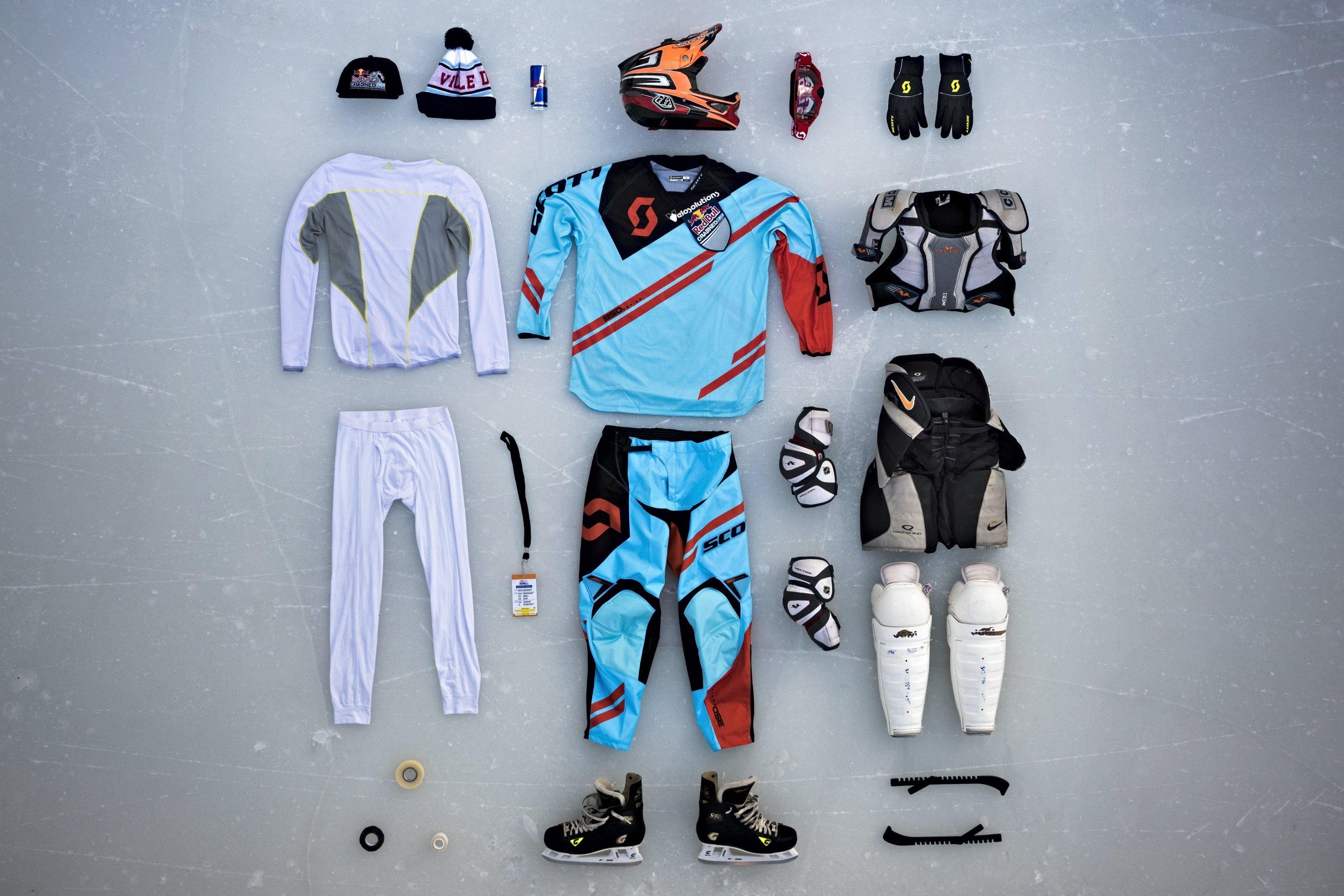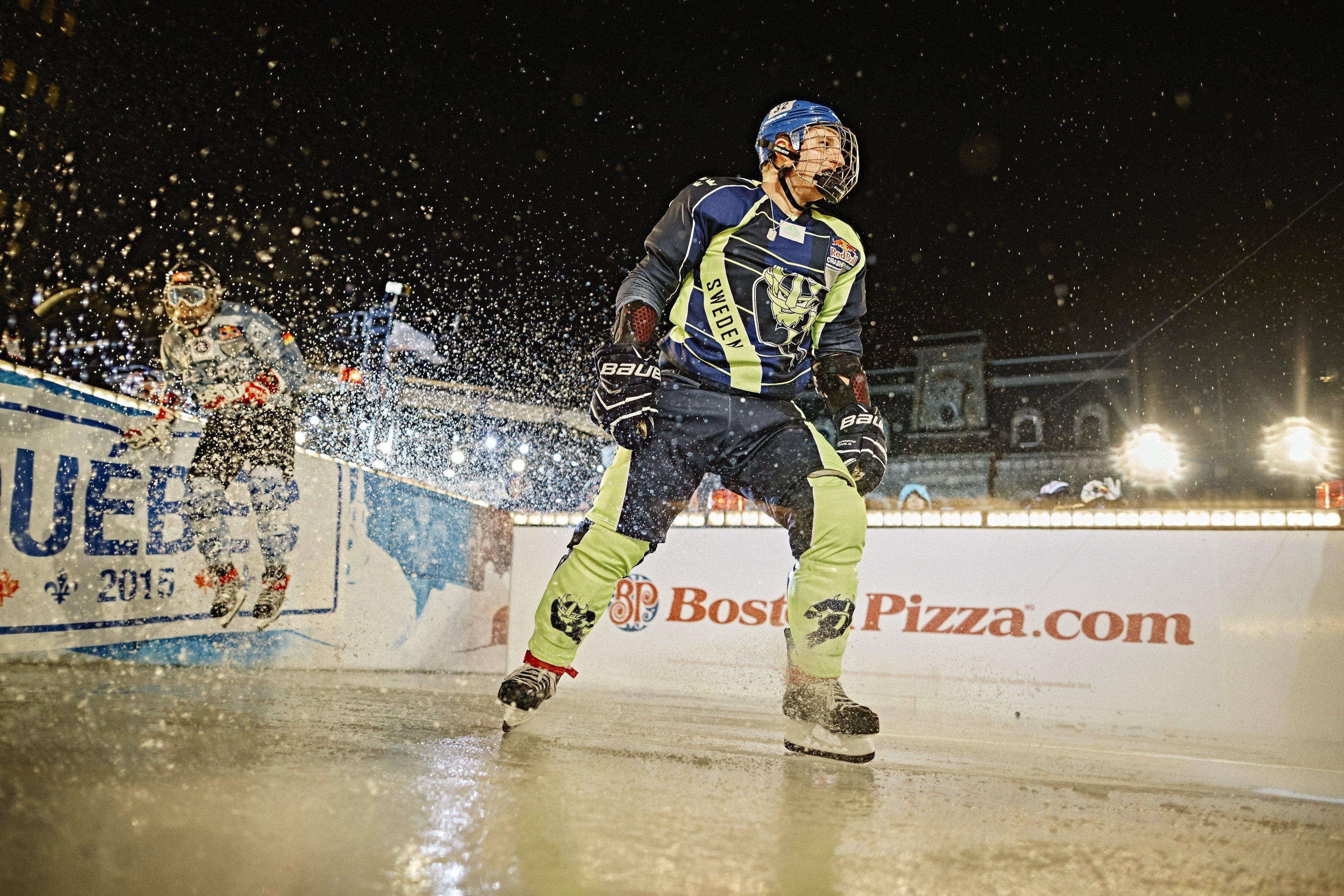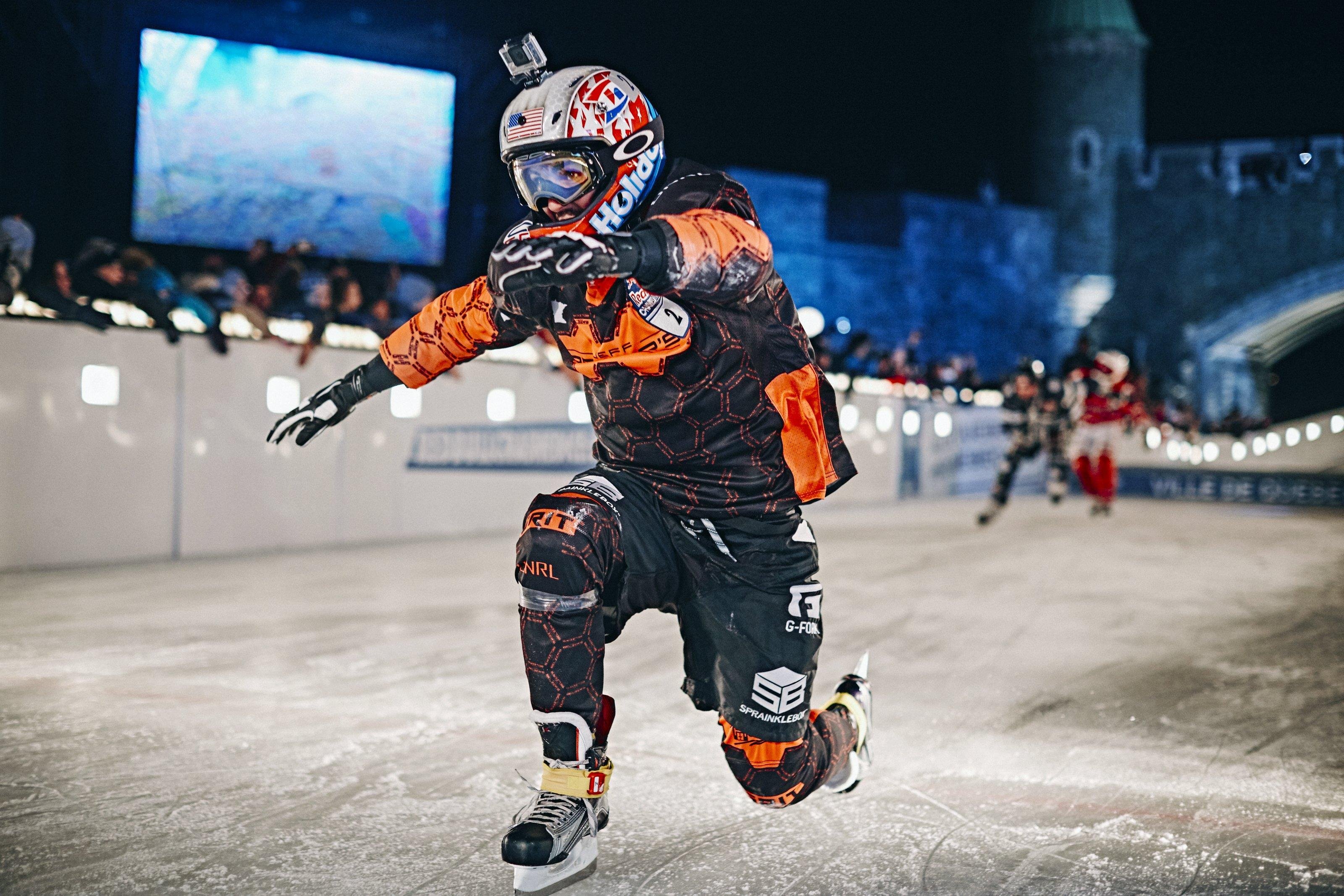In ice cross downhill, as in every serious competitive sport, equipment matters. Wearing the right gear doesn't just give riders protection – it gives them an edge.
Watching a rider getting ready for a Red Bull Crashed Ice race is like watching a modern-day gladiator preparing for battle. Every piece of equipment is laced, strapped, tugged or cinched on with deliberation and adjusted until it's right. There are shields for the body. There are badges of honor.
There are blades.
Thankfully, the metaphor goes only so far. But ice cross downhill is a fast, physical and tactical sport, and each heat is do or die. It's also a contact sport, even if those collisions aren't intentional, and much of that contact – with opponents, the boards or the ice – happens while traveling more than 50 km/h (over 30 mph). Equipment has to be optimally functional, maximally protective and technically advanced: lightweight, strong, resilient and streamlined.

Seven pieces of equipment are required to compete in ice cross downhill:
Skates and blades – A rider's choice of skates and blades is his or her most important equipment decision. Some skate boots are too brittle, breaking under the stress. Others may be too heavy, or might not offer the perfect balance of support and give. Blades come in different weights, lengths and metals – and the sharpening is unique to each rider. The skate is also where riders wear the transponder that helps to determine the order across the Finish Line.
Helmet – Wearing head protection is a no-brainer. Some ice cross downhill athletes are evolving from hockey headgear to motocross and mountain bike downhill helmets that have sophisticated face protection and aerodynamics.

Shoulder protection – Shoulders are the top impact area in ice cross downhill crashes, and they're also one of the more vulnerable joints in the body, but caroming down a track requires free arm movement. So when jostling with three other competitors around a curve, riders need shoulder gear that's strong yet allows excellent range of motion. The perfect equipment rides that fine line between high protection factor and mobility. Chest protection also is incorporated with this piece of gear.
Elbow pads – Shoulder-to-shoulder or elbow-to-elbow, protection and mobility are key.
Gloves – Besides the fact that this is a winter sport (baby, it's cold outside!), a barehanded fall could result in a nasty ice rash, or even an inadvertent slash from a blade. As with helmets, athletes are moving from bulky hockey gloves to well-constructed but sleek models. Anything to cut a fraction of a second.
Hip protection – Hips often take the brunt of a fall, so every athlete wears protection to absorb shock.
Knee and shinbone protection – This gear serves double duty, shielding against impact and accidental blade contact.

Additional highly recommended protection gear includes mouth guard, back protection shield, neck brace, and neck and throat protector.
Plus riders have personal preferences, like a thin underlayer made of high-tech fabric to provide warmth and wick away sweat, goggles, skate guards (to keep blades from touching the ground between runs) and knit hats. And then there's tape, all kinds of tape. There's medical tape, skate tape for boot surfaces – some riders even tape their pants close to their legs so there's no excess fabric to create drag or get caught on a blade.
Finally, there's the jersey. Riders put a lot of thought into their jerseys, and not just to feature sponsor logos and make sure their number is visible on their official Red Bull Crashed Ice tour patch. They choose colors and designs that are meaningful to them personally – and as teams, because team outfits are required to have different designs than individual jerseys. And those designs help fans recognize them, even when they're flashing by in high gear.







